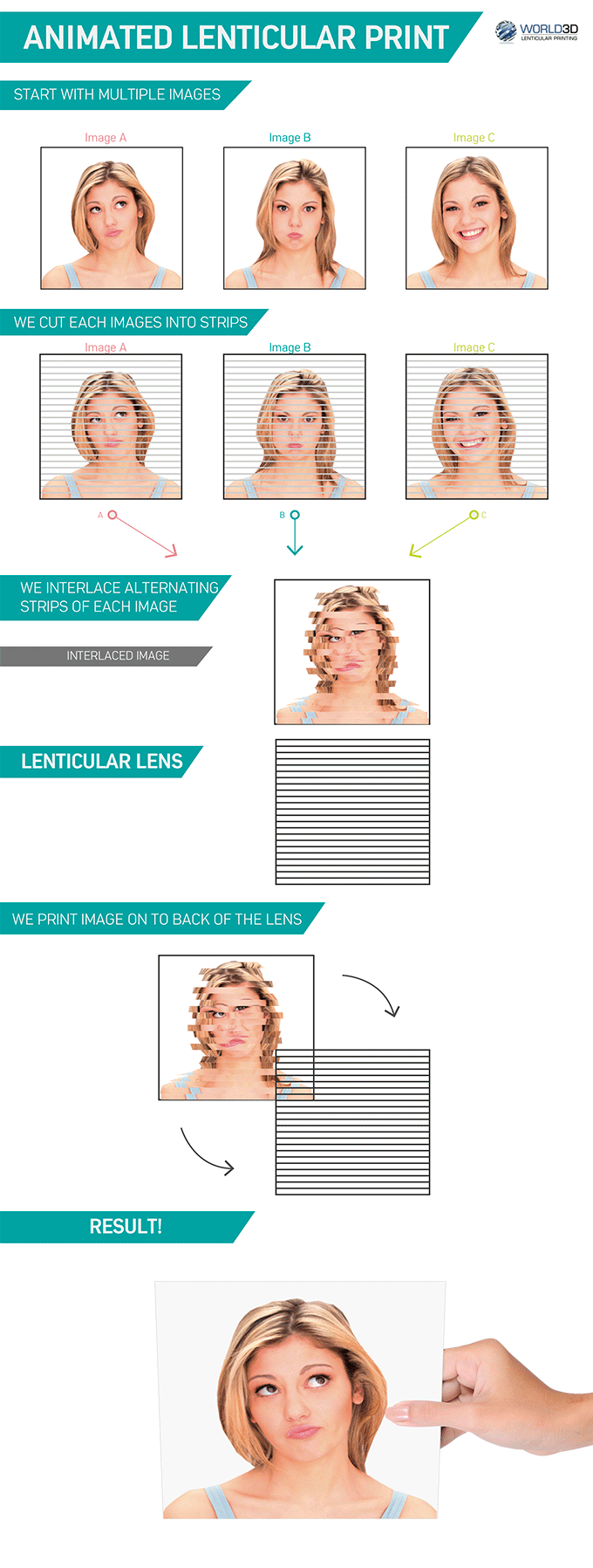Featured FAQ
What is lenticular and what does that odd name mean?
Lenticular images are digital files that have been specially prepared and then printed onto a lens material. This material is a special plastic made up of lenticules, hence the name lenticular printing. The image, viewed through the lenticules, appears to move as it is turned, creating dramatic animation or depth.
Lenticular Infographic
See how lenticular works
You’ve seen lenticular before, but have you ever wondered, “how the heck does that stuff work”? Well, we’re here to show you! To get a better look, let’s take a look at the example on the right.
We Start With Multiple Images
We start with three images of our young lady showing three expressions, images A, B, and C.
We Cut Each Image Into Strips
We “interlace” the three images using proprietary software, cutting each into slices. Those slices will later match up with the lines of the lenticular lens material.
Interlacing
As part of that interlacing process, we shuffle those slices with the resulting file showing a slice of Image A, a slice of Image B, and then a slice of image C. This is repeated until we have a fully interlaced image.
Printing
That interlaced image is then printed directly to the back of the lens material. The lens blocks Image B and Image C from your view, so you only see image A. As you turn the card and change your angle of view, the lens blocks Images A and C, and you only see Image B. Turn it again, and you only see Image C.
Viewing
Turn it quickly, and it animates A,B,C… and when turned the other direction, it shows you C, B, A. So now you have a single card with three images that animates right in your hand!
If you have questions or would like to discuss your project, reach out, and we’ll be happy to help!





